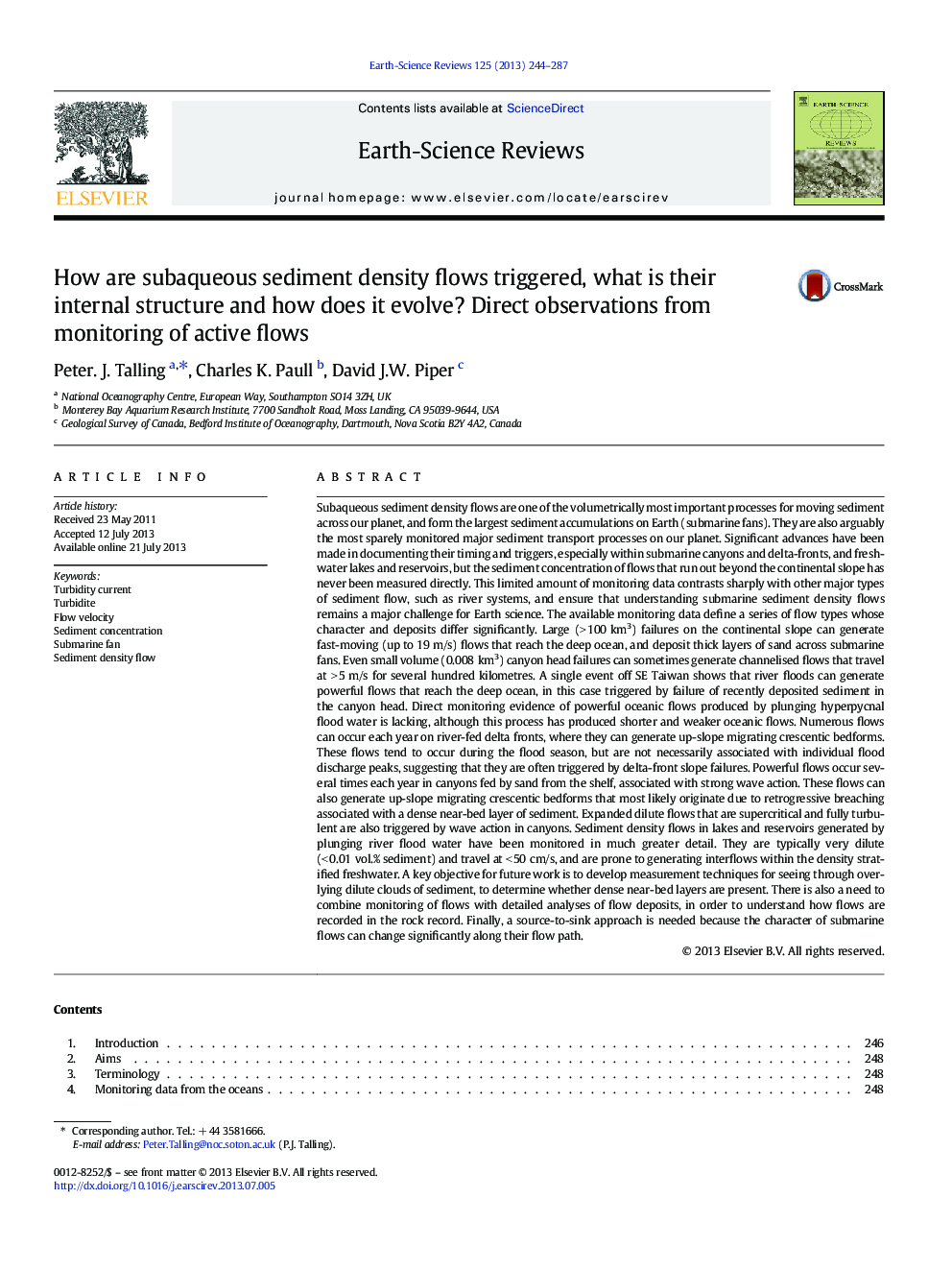| کد مقاله | کد نشریه | سال انتشار | مقاله انگلیسی | نسخه تمام متن |
|---|---|---|---|---|
| 6443179 | 1639977 | 2013 | 44 صفحه PDF | دانلود رایگان |
عنوان انگلیسی مقاله ISI
How are subaqueous sediment density flows triggered, what is their internal structure and how does it evolve? Direct observations from monitoring of active flows
ترجمه فارسی عنوان
جریان چگالی رسوبات زیر آب چگونه ایجاد می شود، ساختار داخلی آنها چگونه است و چگونه آن را تکامل می دهد؟ مشاهدات مستقیم از نظارت بر جریان های فعال
دانلود مقاله + سفارش ترجمه
دانلود مقاله ISI انگلیسی
رایگان برای ایرانیان
کلمات کلیدی
کدورت فعلی، توربیدیت، سرعت جریان غلظت رسوب، طرفدار زیردریایی، جریان تراکم رسوب،
موضوعات مرتبط
مهندسی و علوم پایه
علوم زمین و سیارات
زمین شناسی
چکیده انگلیسی
Subaqueous sediment density flows are one of the volumetrically most important processes for moving sediment across our planet, and form the largest sediment accumulations on Earth (submarine fans). They are also arguably the most sparely monitored major sediment transport processes on our planet. Significant advances have been made in documenting their timing and triggers, especially within submarine canyons and delta-fronts, and freshwater lakes and reservoirs, but the sediment concentration of flows that run out beyond the continental slope has never been measured directly. This limited amount of monitoring data contrasts sharply with other major types of sediment flow, such as river systems, and ensure that understanding submarine sediment density flows remains a major challenge for Earth science. The available monitoring data define a series of flow types whose character and deposits differ significantly. Large (>Â 100Â km3) failures on the continental slope can generate fast-moving (up to 19Â m/s) flows that reach the deep ocean, and deposit thick layers of sand across submarine fans. Even small volume (0.008Â km3) canyon head failures can sometimes generate channelised flows that travel at >Â 5Â m/s for several hundred kilometres. A single event off SE Taiwan shows that river floods can generate powerful flows that reach the deep ocean, in this case triggered by failure of recently deposited sediment in the canyon head. Direct monitoring evidence of powerful oceanic flows produced by plunging hyperpycnal flood water is lacking, although this process has produced shorter and weaker oceanic flows. Numerous flows can occur each year on river-fed delta fronts, where they can generate up-slope migrating crescentic bedforms. These flows tend to occur during the flood season, but are not necessarily associated with individual flood discharge peaks, suggesting that they are often triggered by delta-front slope failures. Powerful flows occur several times each year in canyons fed by sand from the shelf, associated with strong wave action. These flows can also generate up-slope migrating crescentic bedforms that most likely originate due to retrogressive breaching associated with a dense near-bed layer of sediment. Expanded dilute flows that are supercritical and fully turbulent are also triggered by wave action in canyons. Sediment density flows in lakes and reservoirs generated by plunging river flood water have been monitored in much greater detail. They are typically very dilute (<Â 0.01Â vol.% sediment) and travel at <Â 50Â cm/s, and are prone to generating interflows within the density stratified freshwater. A key objective for future work is to develop measurement techniques for seeing through overlying dilute clouds of sediment, to determine whether dense near-bed layers are present. There is also a need to combine monitoring of flows with detailed analyses of flow deposits, in order to understand how flows are recorded in the rock record. Finally, a source-to-sink approach is needed because the character of submarine flows can change significantly along their flow path.
ناشر
Database: Elsevier - ScienceDirect (ساینس دایرکت)
Journal: Earth-Science Reviews - Volume 125, October 2013, Pages 244-287
Journal: Earth-Science Reviews - Volume 125, October 2013, Pages 244-287
نویسندگان
Peter. J. Talling, Charles K. Paull, David J.W. Piper,
